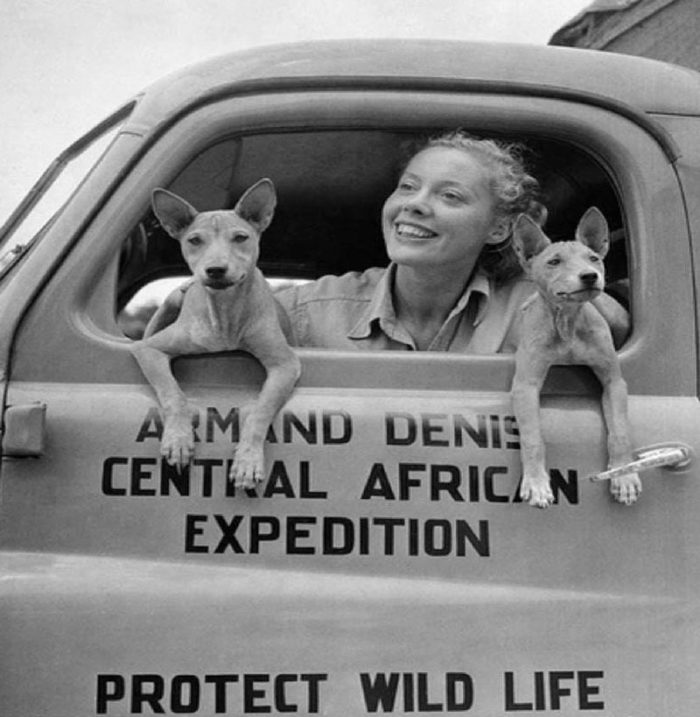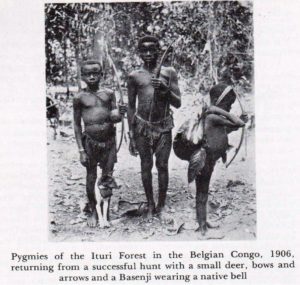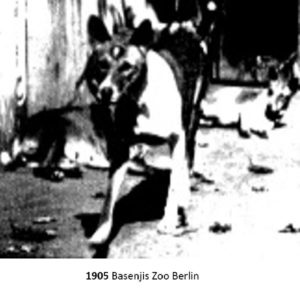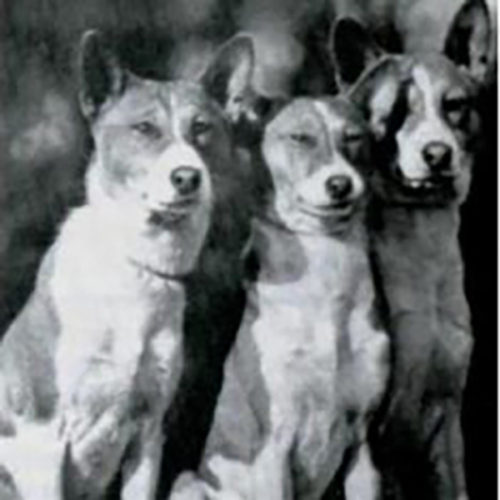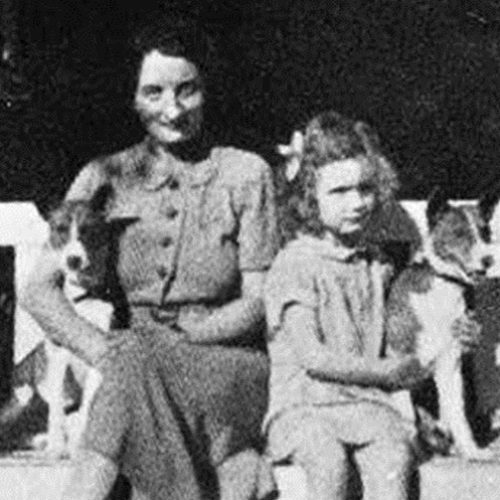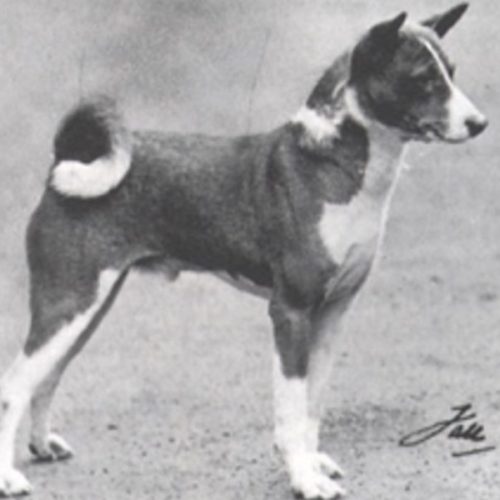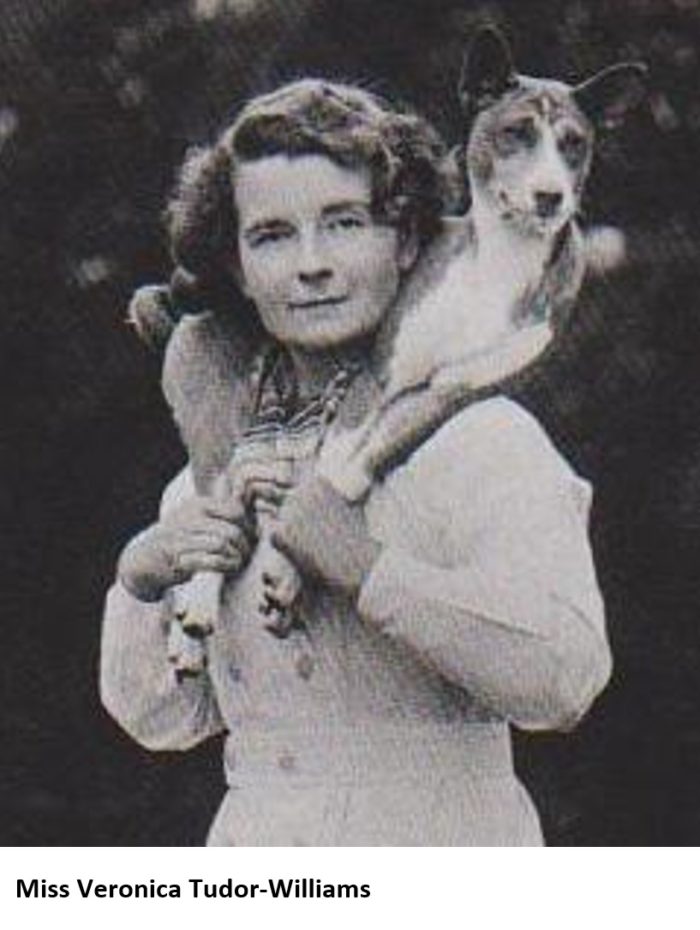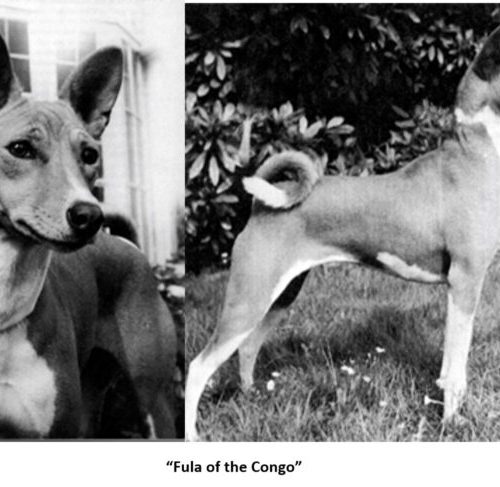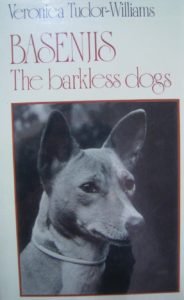Start of Breeding
Discovery of Basenjis by Africa researchers
In 1868 – 71 African explorer Prof. Dr. Georg Schweinfurth noticed some unusual dogs in the Bahr-el-Ghasal (Central Africa) area. They were used as hunting help by the Azande tribes. Today we know he discovered Basenjis, the breed of dog that was small, had long legs, a ringed tail and a short silky fur.
He wrote : ”The only domestic animals whom the Niam Niam bother to raise are chickens and dogs. The latter belong to a small spitz-like race but with smooth and short fur and with big, always upright ears and a short, thin tail that is always curled up tail similar to piglets. Their color is a light leather yellow with a white collar on their neck. The small, pointed snout is sharply set off from the arched head. Their legs are quite long and straight and prove that this race has nothing to do with the dachshund-like dogs in the ancient Egyptian temple images. These Niam Niam dogs also lack, like all other dog families of the Nile area, the rear claw of the hind legs. One hangs wooden bells on their necks, ostensibly to prevent them from getting lost in the prairie grasses. The animals strongly tend to obesity, just like their owners, who intentionally fatten them because the meat of these dogs is one of their preferred delicacies.”
Fascinated, he decided at the end of one of his studies to take a bitch, that appeared to him to be particularly intelligent, back to Europe. The Basenjis’ urge for freedom came however on the return trip to Europe in Alexandria where she jumped to her death from the second floor of a hotel. He was the first to bring, as a believable witness, the knowledge of the Pygmies in Europe. An interest in Basenji dogs was awakened in Europe.
In 1882 Expedition Sir Harry Hamilton Johnston
“Basenjis The barkless dogs” Miss Veronica Tudor Williams reported: “In 1882 H. H. Johnston spent much time in an expedition from the mouth of the Congo to Bolobo, and gave some interesting notes on the Congo dogs, which he described as prick-eared, with foxy head and smooth fawn colored coats. Of their characters he added, they have one admirable point in that they never bark, whilst the attachment between these pretty creatures and their African masters is deep and fully reciprocated.”
In 1894 finally appeared the first report about Basenjis, still not introduced as breed, in Europe. About 60 years ago the BASENJI was recognized as a breed.
The first dogs to be exhibited appeared at Cruft`s Show (Great Britain) in 1895 and were called African Bush Dogs or Congo Terriers. Unfortunately, all the earliest imports into England were lost to the effects of distemper for which there were no vaccinations or during the early, uncertain period of vaccinations for distemper protection.
At the turn of the century, “Congo terriers” were reported in European newspapers and were displayed in zoos, such as in Berlin and Paris.
Basenji in Great Britain – first start with breeding
The first big breeder of Basenjis was Mrs. Olivia Burn, 1929 who repeatedly acquired dogs from the Pygmies in the Congo basin. After several failures (the dogs died from distemper) she established the breed. Mrs. Olivia Burns begins her adventures in collecting and importing Basenjis. The first dogs she imported did not survive to reproduce. She gave brief description (appeared in Veronica Tudor-Williams books, “Basenjis: The Barkless Dogs”) of some of the trials and tribulations she encountered along the way.
At first the Basenjis were named as “Congo Terriers, Bongo-, Nyam Nyam-and Zande- dogs.” With great difficulty, breeding of Basenjis started in Great Britain.
In 1937 the breed was established in Great Britain by Mrs. Olivia Burn, of the “Blean ” Basenji.
In 1937. she created a sensation at Crufts (the famous dog show in Great Britain) with the exhibition of her first puppies. Judge and breeder were positively besieged by the crowd and bombarded with questions.
The Basenji Club of Great Britain was formed on 2 September 1939 and is the oldest established club in the world for the breed of Basenjis.
The first standard ever was formulated and the Basenji as breed established. In the following years Basenji clubs in Australia, Canada and the United States were established.
The world-famous Basenji expert Miss Veronica Tudor-Williams wrote an article.
In it she wrote: “It would be a tragedy if these canines of such ancient lineage, having maintained their identity over numerous centuries, would now be lost to us forever as a consequence of expanding civilization”.
She discovered the dog “Fula of the Congo” herself on an expedition in the South Sudan on the border with Zaire, and later wrote a book about it.
Veronica Tudor-Williams continued to breed during World war II, despite bombardment and rationing. She successfully reared a number of litters. Milk was impossible to get (if you didn’t have a baby), so Veronica had milk powder sent from the USA to help with weaning.
Remarkably, during the war Veronica also exported Basenjis to USA and Canada and these helped establish the breed in both these countries.
In 1947 King Farouk of Egypt (at that time Egypt was still a Monarchy) approached Veronica Tudor Williams with a view to purchasing two Basenjis. After consultation, with Veronica and the King, Farouk’s envoy said the King had now decided to have four puppies. Veronica delivered puppies to the airport where the puppies each had an individual seat for the flight to Egypt. So this dog of the Pharaohs was returning from where it came, to a ‘Pharaoh’ and in Royal Style.


